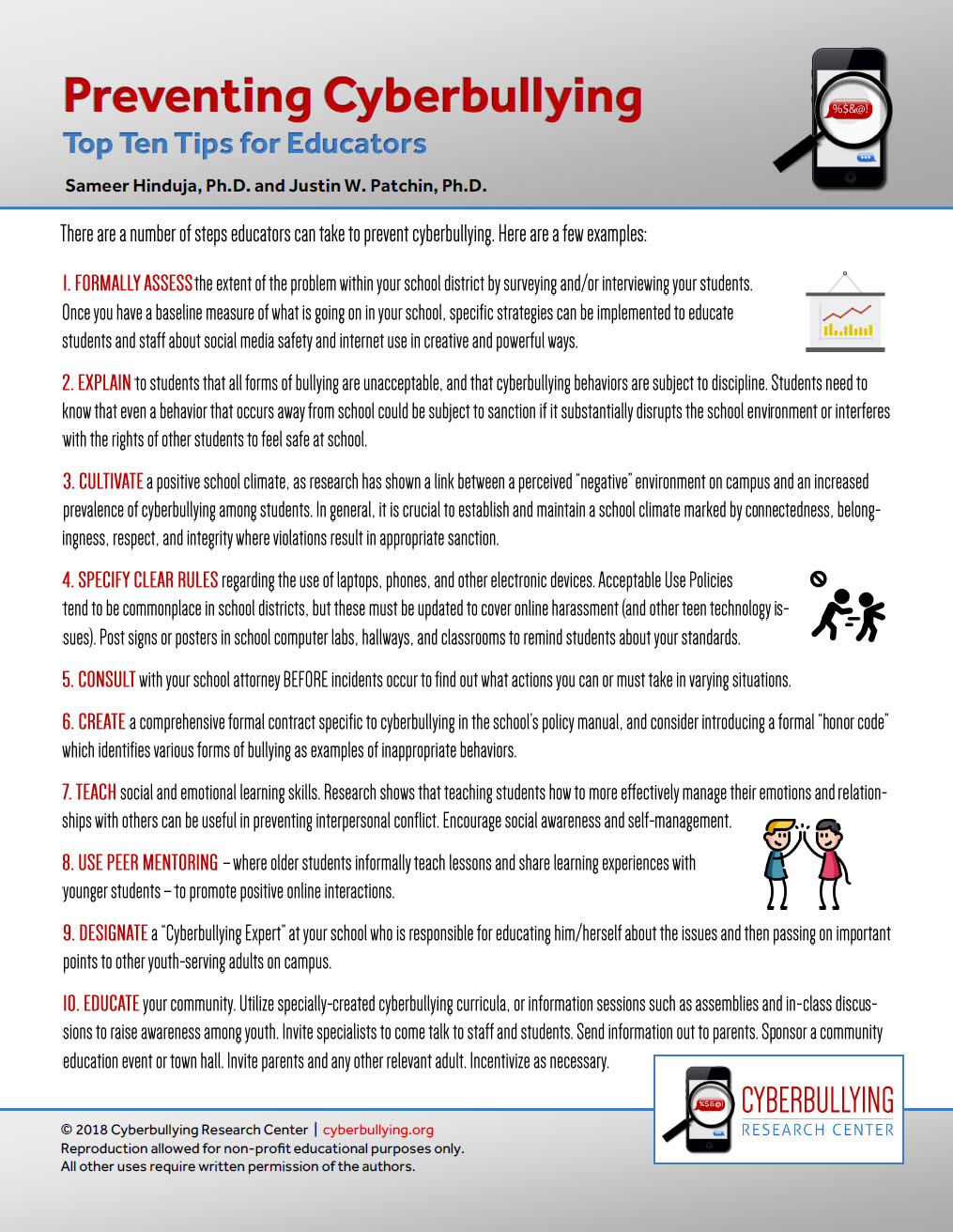
(For a formatted .pdf version of this article for distribution, click on the image above [or click here]).
Spanish Translation Available Here
There are a number of steps educators can take to prevent cyberbullying. Here are a few examples:
1. FORMALLY ASSESS the extent of the problem within your school district by surveying and/or interviewing your students. Once you have a baseline measure of what is going on in your school, specific strategies can be implemented to educate students and staff about social media safety and internet use in creative and powerful ways.
2. EXPLAIN to students that all forms of bullying are unacceptable, and that cyberbullying behaviors are subject to discipline. Students need to know that even a behavior that occurs away from school could be subject to sanction if it substantially disrupts the school environment or interferes with the rights of other students to feel safe at school.
3. CULTIVATE a positive school climate, as research has shown a link between a perceived “negative” environment on campus and an increased prevalence of cyberbullying among students. In general, it is crucial to establish and maintain a school climate marked by connectedness, belongingness, respect, and integrity where violations result in appropriate sanction.
4. SPECIFY CLEAR RULES regarding the use of laptops, phones, and other electronic devices. Acceptable Use Policies tend to be commonplace in school districts, but these must be updated to cover online harassment (and other teen technology issues). Post signs or posters in school computer labs, hallways, and classrooms to remind students about your standards.
5. CONSULT with your school attorney BEFORE incidents occur to find out what actions you can or must take in varying situations.
6. CREATE a comprehensive formal contract specific to cyberbullying in the school’s policy manual, and consider introducing a formal “honor code” which identifies various forms of bullying as examples of inappropriate behaviors.
7. TEACH social and emotional learning skills. Research shows that teaching students how to more effectively manage their emotions and relationships with others can be useful in preventing interpersonal conflict. Encourage social awareness and self-management.
8. USE PEER MENTORING – where older students informally teach lessons and share learning experiences with younger students – to promote positive online interactions.
9. DESIGNATE a “Cyberbullying Expert” at your school who is responsible for educating him/herself about the issues and then passing on important points to other youth-serving adults on campus.
10. EDUCATE your community. Utilize specially-created cyberbullying curricula, or information sessions such as assemblies and in-class discussions to raise awareness among youth. Invite specialists to come talk to staff and students. Send information out to parents. Sponsor a community education event or town hall. Invite parents and any other relevant adult. Incentivize as necessary.
Citation information: Hinduja, S. & Patchin, J. W. (2018). Preventing Cyberbullying: Top Ten Tips for Educators. Cyberbullying Research Center. Retrieved (insert date), from https://cyberbullying.org/Top-Ten-Tips-Educators-Cyberbullying-Prevention.pdf
Keywords: educators, administrator, teacher, counselor, tips, prevention, cyberbullying, prevent, teens







